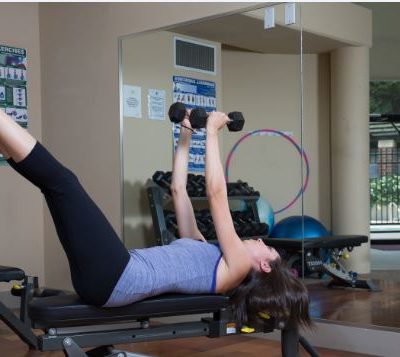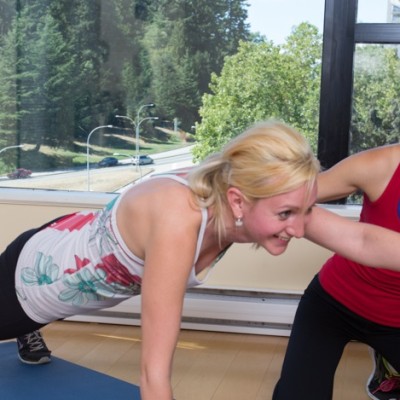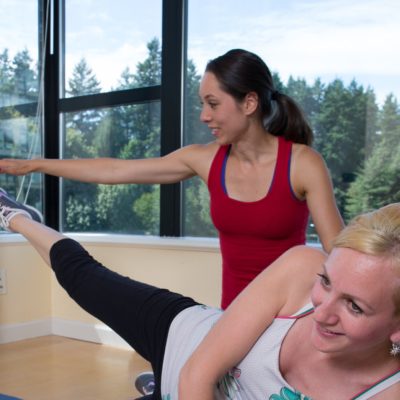(This post is based on a workshop I attended through the Personal Training Collective, a community which teaches and trains personal trainers to be the best they can be! This workshop was presented by exercise physiologist Brian Justin, who also has a Master’s degree in Kinesiology on top of many other credentials – this means I’m not making this sh*t up)
So today we’ll be talking about sitting and to start I want to ask you something: nod your head awkwardly if you’ve heard of the phrase “sitting is the new smoking”.
If you’re nodding, do you know why this is such a big deal? Yes? No? Most people kind of know but not really more than hearing that sitting makes us fat.
If you’re not nodding – don’t worry. By the end of this article you’ll know plenty about what sitting does to our bodies.
But before we go into that, here are a couple of important things to keep in mind.
- Evolution – the process by which plants and animals become more suitable to handle their ever-changing environment – and this process happens over millions of years. Humans evolved over millions of years too, so this means we aren’t that genetically different than we were, say, 100 years ago. Why is this relevant? Because, while our bodies are pretty much the same, our lifestyles are not. People 100 years ago MOVED a lot more than we do today. With the invention of cars, and office jobs, and no longer needing to tend after our own livestock and crops, we no longer need to move around as much. Moreover, with the rise of technology, we often find ourselves immersed in our TVs, phones and computers for hours! These days we can even get home deliveries for our groceries. The problem, however, is that our bodies still need to move because that’s what they were designed to do. And yet we do the exact opposite.
- Working out – sitting affects your body REGARDLESS of your activity levels. This means that even if you religiously put in that 1hr every day at the gym, but sit for 8hrs or more, you are still at risk for many of the health problems associated with being inactive. This is why FitBits and Samsung health apps and all these sorts of devices care about how many steps you take during the day – because simply moving around reduces your risk for many diseases.
Ok, now keeping those two things in mind, let’s look at the different body systems and see what effect sitting has on each of them.
Muscular system
I know this one is pretty obvious so I thought I would start here. It’s pretty intuitive that when we sit our muscles get morphed into unnatural positions.
That causes some of our muscles to shorten, and others to lengthen.
Muscles that shorten include our hip flexors, hamstrings, pecs and neck flexors. Muscles that lengthen include your quads, mid-back and neck extensors. This leads to rounded shoulders and forward head postures – both of which are starting to become staples of our society.
Secondly, in order for muscles to fire properly, they need to be at their optimal length. If they are shorter or longer, they misfire – which means that 1hr workout you’re doing in the gym will be less effective. Everyday life will also be less effective and efficient.
Skeletal system
We often think of bones as being pretty static but it turns out they are quite dynamic. In fact, when you exercise, it’s not just your muscles that get stronger – it’s your bones too!
The stress you place on your bones through walking, standing and just moving around causes an adaptation in the bone so that it’s ready for the next time you apply that stress. When we do nothing but sit all day, we are no longer placing as much stress on our bones – which causes them to resorb. Thus, lower levels of activity result in weaker bones.
There’s also the “joint by joint theory”. Proposed by Gray Cook and Mike Boyle, this theory states that our joints are meant to be an alternating series of either stable or mobile, with the hip as one of the joints which should primarily be mobile. But, through sitting, we force it to become stabile. Whenever a joint changes its basic function, another one needs to compensate – and when the hip becomes too stable, it forces the lumbar spine to take on more movement than it’s been intended to – which is why a lot of people who sit have lower back problems.
Digestive System
Sitting also has a negative impact on peristalsis, the process which moves food along your digestive tract. With our digestive organs compressed from sitting, this process becomes more difficult and can have an impact on our bathroom habits! Turns out moving around can be hugely important in getting us to go #2.
And we’ll just leave it at that because some of you are red in the face already!
Circulatory system
Our calf muscle (and in particular the deep muscle in the calves called the soleus muscle) serves as our second heart, helping to pump blood back into the upper part of our bodies. When we sit, this muscle is deactivated and can affect circulation. In most dramatic cases, this can lead to deep vein thrombosis, where clots form in the veins. A simple way to offset this is to do some seated calf raises, to get these muscles to activate – in fact I’m doing some of these as we speak 😀
Sitting also affects our body’s ability to regulate blood pressure – research has shown that simply the motion of standing up activates mechanoreceptors in our necks which help with this.
Respiratory system
Humans are nose breathers but we become mouth breathers when we are faced with a fight or flight situation. Think back to a really scary situation you were faced with in the past: you likely started hyperventilating and breathing heavily through your mouth.
This situation is pretty obvious – we’re stressed out and we observe a physiological response in our bodies. But what’s not so obvious is that the opposite can be true: our breathing patterns can actually cause our bodies to enter a state of stress.
When we sit, breathing through our mouths becomes easier than breathing through our nose – and remember what mouth breathing is associated with? That’s right, the fight or flight response! Without even realizing it, we could be stressing out our bodies – and, as we know, stress is the leading cause of many, many disorders.
Neural system
The brachial plexus is a network of nerves that extends from the spinal cord through the neck, over the first rib and into the armpit. It supplies nerves to the chest, shoulder, arm and hand. Through sitting, these nerves can become impinged and can lead to a painful condition whose symptoms include tingling down your arms and fingers.
Another nerve that’s at risk for impingement is the sciatic nerve in your lower back, which then causes tingling down the leg.
So what can you do?
Ok so by now you’re probably sitting (or standing!) there taking all of this in, potentially freaking out coz you have a desk job and use your car to commute to work, and you’ve already given up on life.
As it turns out, there are a lot of things you can still do! The key is to do lots of low intensity movements throughout the day. Here are some ideas
- If you looove writing emails see if you can get up and go talk to that person instead
- Drink more water (most of us fail miserably in this category anyway) – you’ll need to pee so you’ll have to get up
- If you usually take the elevator up to the office, see if you can take the stairs.
- Schedule a walking meeting if you’re only catching up with one or two people (you’ll get some fresh air too!)
- Stand on the train or bus instead of jumping for the next available seat
- Some organizations allow you to get a standing desk – see if your work can do that for you
- Print your documents using a different printer – preferably one that’s further away!
- We should be moving every 20-30min – set a timer on your computer that reminds you when it’s time to get up. Or, if you’re into tech – see if your smartphone or smartwatch can do this for you!
- If you own a FitBit or smartwatch, set a goal for number of steps you want to take that day (which your device can measure for you). You’ll be able to see right away if you’re failing miserably and need to up your game
- Remember your second heart! Do some seated calf raises
The bottom line is that you want to move. Be restless throughout your day and get small bouts of activity in as often as you can. Don’t rely on your workouts to be the only source of movement.
This week I challenge you to review the list above and see which one thing you can do to get yourself moving right away – remember it’s about small changes that can make a huge impact on your life!
About me
After being skinny unfit for the majority of my life, I discovered fitness by accident once I became a mom and started working out with my husband. A couple of years later, I started Tone Every Zone out of an overwhelming desire to help other busy individuals and couples juggle a hectic lifestyle while staying active.
skinny unfit for the majority of my life, I discovered fitness by accident once I became a mom and started working out with my husband. A couple of years later, I started Tone Every Zone out of an overwhelming desire to help other busy individuals and couples juggle a hectic lifestyle while staying active.
My mission is to teach people about fitness and work with them as a team to make long lasting lifestyle changes. My personal values include being professional, honest and transparent in all of my doings but also being funny and silly because that’s what makes life (and your training sessions) fun!
Every day I hear from tons of couples who are dying to get more active but they just need that extra push! Getting people started on a fitness program is what I love to do. Check out my personal training packages and share your story with me so I can help you reach your fitness goals!




